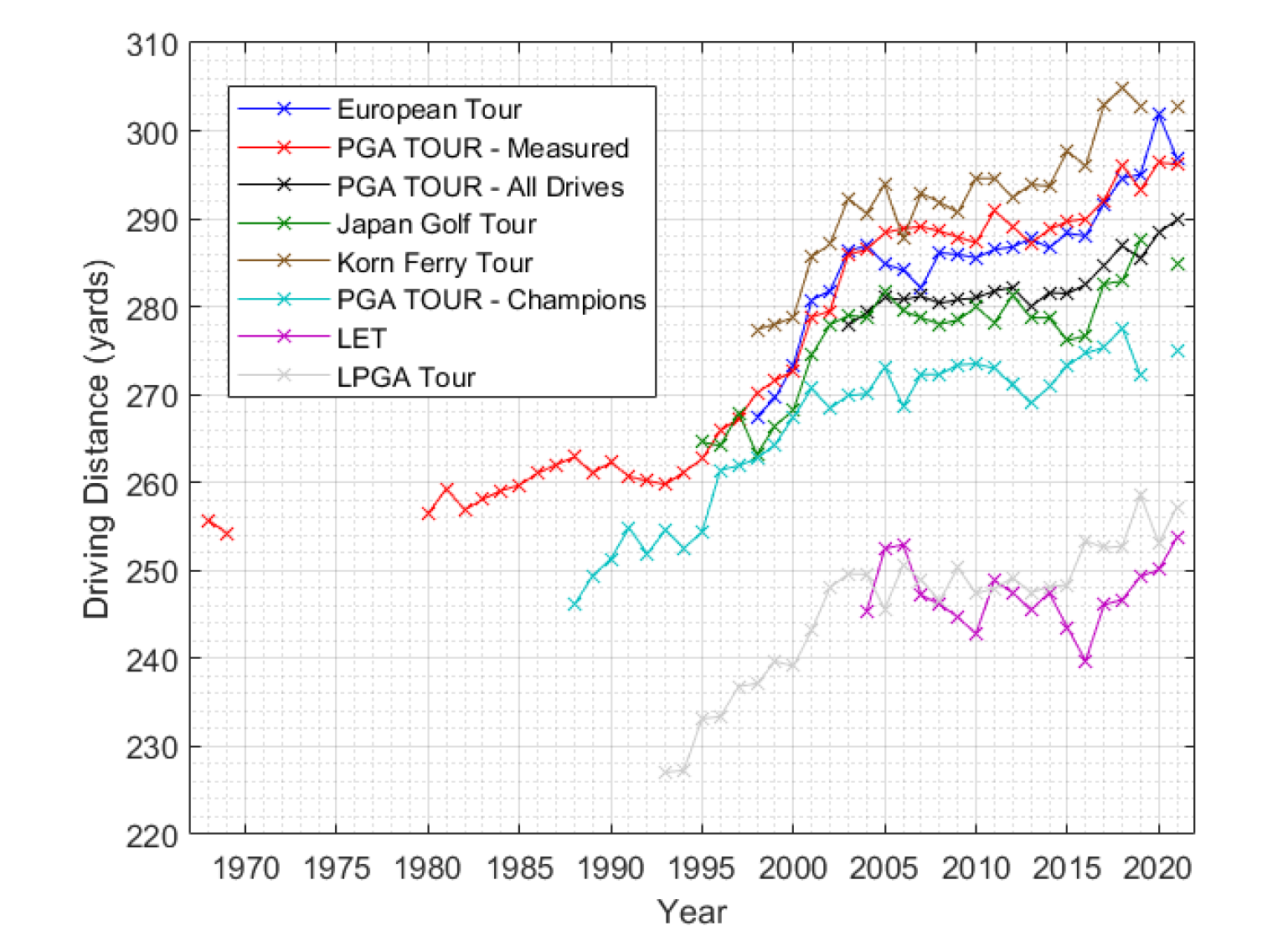Plans to roll back the distance that a golf ball can travel at professional and elite level amateur events have been met with strong resistance by many top players and by some leading golf ball manufacturers, but are unlikely to prevent a future split between the rules of golf for pros and those for regular club golfers in the coming years.
Under new rules proposed by the R&A and its American counterpart, the USGA, golf balls used in professional events and elite amateur golf will travel about 15 yards less far when hit with a driver. If adopted, the new rule will come into the laws of golf by January 2026.
With the professional game’s longest drivers routinely hitting the ball more than 350 yards off the tee, the revision to the golf ball is designed to make some of golf’s oldest and most revered tournament venues more of a challenge for tour pros, while still making them playable for the amateur golfer.
“We strongly feel we have crossed the rubicon on distance and that we had to do something,” said R&A chief executive Martin Slumbers. “Doing nothing is not an option and would be completely irresponsible of us.”
“We had three very large pieces of feedback,” Slumbers added. “One was, please do not affect the recreational game. It is in a good place at the moment. The best solution is a Model Local Rule around the golf ball. And that would be structured in a way that would be for elite golf, which is far more than just professional golf.”
Under the proposals, a ball struck at a laboratory-controlled swing speed of 127mph must not travel more than 320 yards. Data provided for last year’s Annual Driving Distance Report showed an average clubhead speed of 114.6mph on the PGA Tour.
“The net effect of that on an average tour player is a reduction of about 14 to 15 yards,” Slumbers explained.
The R&A and the USGA have been examining distance issues for the past six years. Debate on the topic has raged for decades while golf courses have grown longer and longer. These proposals follow feedback after publication in 2020 of the joint R&A and USGA Distance Insights project. Initial plans included modifying specifications to drivers used by top players, but these have been ditched in favour of introducing a local rule that would allow organisers of elite events to insist on the use of a distance-reducing tournament ball.
 “It would be optional and there are a lot of conversations that need to be had over the next couple of years,” Slumbers said. “The golf industry has six months to provide further feedback. We have been hugely collaborative with manufacturers, players, tours, all sorts of people right across the industry. There is a real mixture of issues that need to be reconciled as we move forward, but the R&A does have this custodial responsibility for protecting the integrity of the game. This is what we believe is the right way for the sport to go.”
“It would be optional and there are a lot of conversations that need to be had over the next couple of years,” Slumbers said. “The golf industry has six months to provide further feedback. We have been hugely collaborative with manufacturers, players, tours, all sorts of people right across the industry. There is a real mixture of issues that need to be reconciled as we move forward, but the R&A does have this custodial responsibility for protecting the integrity of the game. This is what we believe is the right way for the sport to go.”
Slumbers says it has been a painstaking and collaborative process to arrive at a point where firm recommendations have now been made. He also insists this will not discriminate against golf’s biggest hitters. He said: “The best drivers of the golf ball will always be the best drivers of the golf ball. Everything is relative. But I believe the game is not just about driving but the whole balance of clubs right through the bag.”
There is no indication at this point that one specific brand or type of ball would have to be used, but it is likely that every golf ball company that wants to have a ball being used for professional tournament play would have to create a new ball that fell within the new performance parameters.
TOUR PLAYER & GOLF BALL MANUFACTURER REACTION

The PGA and DP World Tours have been opposed to limiting the driving power of their players, and manufacturers are against reducing the potency of their products, while several top players have already spoken out against the proposals.
Two-time major champion Justin Thomas said: “The great thing to me is the fact that you can play the exact same golf ball that I play. That’s cool. For an every day amateur golfer, it’s very unique that we are able to play the exact same equipment.”
He added: “If you can swing 127 miles an hour, like, power to you. I mean, people are running faster, so, what, are they just going to make the length of a mile longer so that the fastest mile time doesn’t change, or are they going to put a basketball hoop at 13 feet because people can jump higher now? Like, no. It’s evolution. We’re athletes now. Like, we’re training to hit the ball further and faster and if you can do it, so good for you. So yeah, as you can tell, I’m clearly against it.”
However, not all tour pros are against the proposed changes. Brandon Matthews, who has the PGA Tour’s fastest average swing speed (126.6mph) said that he welcomed the idea. “I’m really looking forward to seeing shot shapes again like you used to see,” he said. “Like a rising ball flight. You don’t see that anymore because of the ball technology. So you’re going to see a little more of that come back, which is really cool. I don’t know how far they’re going to go with this, but it’s going to be a really exciting change and I think it’s going to make the game a little bit better.”
Meanwhile, Acushnet, which manufacture the Titleist Pro V1 balls that are most popular on tour, attacked the splitting of rules between the elite and recreational forms of the game. “Golf is an aspirational sport and we believe at its very best when equipment and playing regulations are unified,” said David Maher, the company’s president and chief executive. “During the past two decades, PGA Tour average playing length has increased by less than 100 yards and scoring average has remained virtually flat.”
The R&A and the USGA have set out a five-month timescale for further discussions between interested parties, before making a final decision. If adopted the new rule could be in place for the beginning of 2026.

